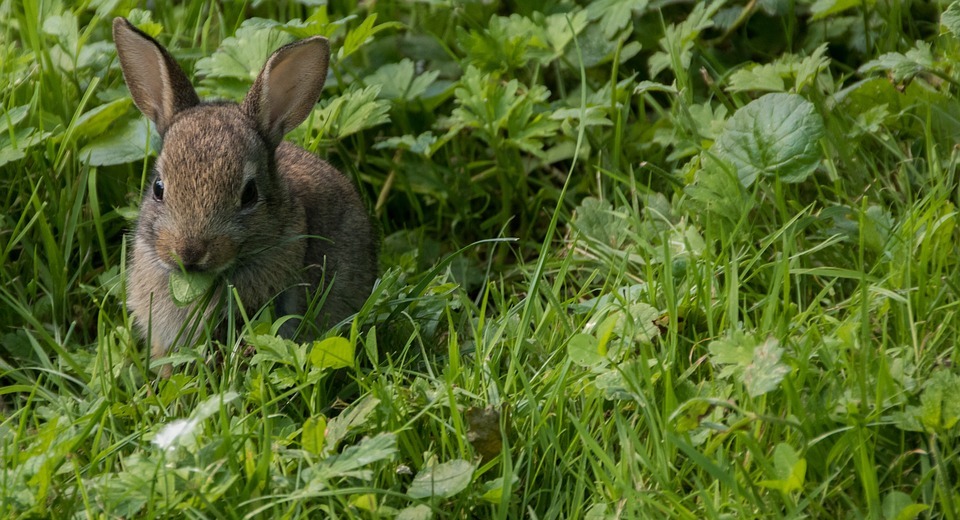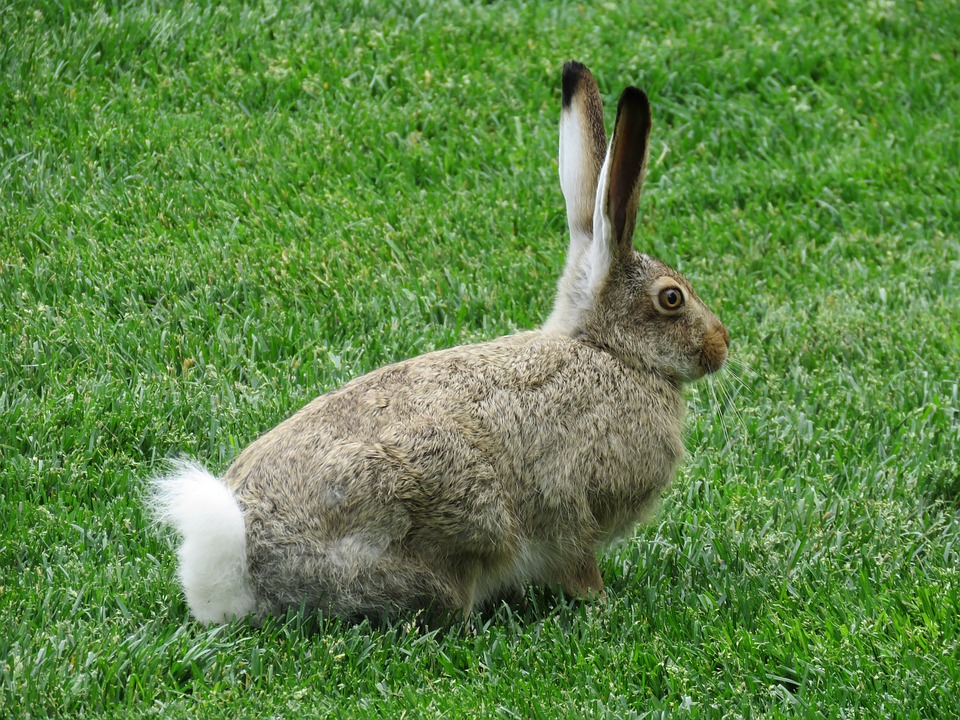Rabbits are known for their soft, cuddly nature and captivating charm. But beyond their fluffy exterior lies a fascinating world of communication, where subtle sounds and intricate body language tell a tale of emotions, intentions, and social interactions. This article delves deep into the world of rabbit sounds, exploring the meaning behind each vocalization and non-vocal cue, and offering insights into the rich and complex language of these fascinating creatures.
Part 1: A Silent Language: The Importance of Non-Vocal Communication

1.1 The Language of the Ears
A rabbit’s ears are not just adorable appendages; they are powerful communication tools. Their position, movement, and even subtle twitches can convey a range of emotions.
1.1.1 Erect and Forward: Alertness and Curiosity
When a rabbit's ears are perked up and pointed forward, it signifies alertness and an engaged state. This posture indicates they are interested in their surroundings and are ready to explore.
1.1.2 Flattened Against the Head: Fear and Anxiety
Flattened ears pressed against the head are a telltale sign of fear or anxiety. The rabbit is feeling threatened and is preparing to flee or defend itself.
1.1.3 Rotated to One Side: Focused Listening
When a rabbit rotates its ears to one side, it is actively listening to a particular sound. This behaviour suggests focused attention and an attempt to pinpoint the source of the noise.
1.2 The Telltale Whiskers: Sensory Explorers and Emotional Indicators
A rabbit's whiskers are incredibly sensitive appendages that serve a dual purpose: sensory exploration and emotional communication.
1.2.1 Forward and Twitching: Exploring the World
When a rabbit's whiskers are extended and twitching, they are actively exploring their environment. They are using their whiskers to sense their surroundings, gather information, and navigate their world.
1.2.2 Flattened and Backward: Fear or Aggression
Flattened whiskers pressed against the face are a clear indicator of fear or aggression. This posture suggests the rabbit is feeling threatened and is preparing to defend itself.
1.3 Body Language: Posture Speaks Volumes
A rabbit's body posture provides valuable clues about its emotional state and intentions. From relaxed lounging to tense crouching, their body speaks a language understood by fellow rabbits and observant humans.
1.1.1 Upright and Relaxed: Contentment and Calm
A relaxed, upright posture with a calm tail signifies a content and comfortable rabbit. This posture suggests they feel safe and secure in their environment.
1.1.2 Crouched and Tense: Fear and Submission
A crouched posture with a tense body indicates fear or submission. This posture suggests the rabbit is feeling threatened or vulnerable.
1.1.3 Bouncing and Hopping: Playfulness and Excitement
Bouncing and hopping are expressions of playfulness and excitement. This behaviour signifies a happy and energetic rabbit enjoying their surroundings.
Part 2: Deciphering the Vocal Lexicon of Bunnies

2.1 Grunting: A Sound of Contentment
A low, guttural "grunt" is a common vocalization associated with contentment and relaxation, especially during grooming or feeding. It signifies a happy and relaxed rabbit.
2.2 Snorting: Alertness and Warning
A short, sharp "snort" can indicate alertness, a warning, or a playful response. It might signal an alert rabbit noticing something in their environment, a warning to other rabbits, or a playful interaction.
2.3 Tooth Grinding: A Silent Cry for Help
Teeth grinding is not a pleasant sound, and it's never a positive sign. This grinding is a clear indicator of pain or discomfort. The rabbit is experiencing distress and may require veterinary attention.
2.4 Whining: Expressing Fear and Distress
A high-pitched "whine" is an alarming sound that signifies fear, anxiety, or distress. The rabbit is experiencing discomfort or feeling threatened and may need reassurance or comfort.
2.5 Screaming: A Sign of Extreme Distress
A loud, piercing "scream" is a rare and extreme vocalization reserved for situations of immense pain or fear. It signals a serious problem and warrants immediate veterinary attention.
Part 3: The Sounds of Play and Affection
3.1 Binkying: A Joyous Dance of Excitement
Binkying is a spectacular display of pure rabbit joy and excitement. It involves a sudden leap, twist, and kick in the air, often accompanied by a happy "chirp" or a series of short, sharp grunts. It signifies a happy, playful, and content rabbit.
3.2 Grooming: A Ritual of Trust and Affection
Rabbits are meticulous groomers, spending considerable time cleaning themselves and their companions. This social ritual is not just about hygiene; it also serves as a way to strengthen bonds, demonstrate trust, and express affection.
3.3 Chirping: The Language of Love
A soft, high-pitched "chirp" is a sweet expression of affection and contentment, often used during bonding interactions. It signifies a happy and trusting relationship between rabbits.
3.4 Thumping: Communicating Alarm and Location
Rabbits thump their hind legs against the ground to communicate alarm, warn other rabbits of danger, or simply announce their presence. The sound of a thumping foot can indicate fear, surprise, or an attempt to communicate with other rabbits.
Part 4: Recognizing Signs of Distress: When Sounds Signal Trouble
4.1 Fear and Anxiety: Sounds of Discomfort
Whining: A high-pitched sound signaling fear, anxiety, or distress. The rabbit may need reassurance or a calm environment.
Flattened Ears: Indicate fear, anxiety, or submission. The rabbit may feel threatened and need comfort.
Crouched Posture: A tense, crouched posture suggests fear or vulnerability. The rabbit might need reassurance and a safe space to relax.
Excessive Grooming: Rabbits may groom excessively as a coping mechanism when stressed or anxious.
4.2 Pain and Discomfort: When Silence Speaks Volumes
Teeth Grinding: A clear indicator of pain or discomfort, often accompanied by shivering or other signs of distress. Seek veterinary attention promptly.
Screaming: A loud, piercing sound reserved for extreme pain or distress. Immediate veterinary attention is necessary.
Loss of Appetite: Pain or illness can lead to a decreased appetite. Consult a veterinarian if you notice a significant change in your rabbit's eating habits.
4.3 Aggression: Understanding the Warning Signs
Hissing: A warning sound used to intimidate other rabbits or defend territory. The rabbit is feeling threatened and may escalate aggression if the perceived threat persists.
Growling: A guttural sound used to threaten or defend territory. It's a warning sign that the rabbit is agitated and may be prepared to defend itself.
Biting: A last resort for a rabbit feeling threatened or cornered. It signifies aggression and a need to address the underlying cause of the behaviour.
Part 5: Unveiling the Social Dynamics of Rabbits: A World of Communication
5.1 Establishing Dominance: A Hierarchy of Sounds
Rabbits often establish a clear hierarchy within their social groups, with dominant individuals claiming access to resources and mating opportunities. This dominance hierarchy is maintained through a complex interplay of sounds and behaviours.
Chasing: Dominant rabbits may chase lower-ranking rabbits to assert their position and reinforce the social order.
Sniffing and Mounting: Dominant rabbits may sniff and mount other rabbits to establish their dominance.
5.2 Maintaining Harmony: The Art of Peaceful Coexistence
Rabbits use a combination of vocalizations, body language, and olfactory cues to navigate their social interactions and maintain harmony within their groups.
Negotiating Resources: Rabbits use their unique sounds and behaviours to settle disputes over food, territory, or mates.
Forming Bonds: Rabbits engage in grooming and social play to strengthen relationships, build trust, and express affection.
Part 6: Understanding Rabbit Communication for a Deeper Connection
6.1 Paying Attention to Body Language: The Subtle Clues
Observing your rabbit's ears, whiskers, and posture provides valuable insights into their emotional state, allowing you to understand their needs and respond accordingly.
6.2 Recognising Distress Signals: When Your Rabbit Needs You
Being aware of the signs of distress and discomfort, such as whining, teeth grinding, and hiding, enables you to provide timely reassurance, comfort, or veterinary care.
6.3 Providing Enrichment: Keeping Your Rabbit Happy and Engaged
Enrichment activities such as hiding food, providing tunnels, and toys help keep rabbits entertained, stimulate their minds, and reduce boredom-related behaviours.
6.4 Creating a Safe and Secure Environment: A Haven for Your Bunny
A secure and comfortable environment, with ample space, hiding places, and a safe haven, helps rabbits feel safe, secure, and relaxed.
Part 7: Frequently Asked Questions
7.1 What does it mean when my rabbit thumps its foot?
Thumping is a common rabbit behaviour, often used to communicate alarm, warn other rabbits of danger, or simply announce their presence. A thumping foot can indicate fear, surprise, or an attempt to communicate with other rabbits.
7.2 Why does my rabbit grind its teeth?
Teeth grinding in rabbits is usually a sign of pain or discomfort. It can be caused by various factors, including dental problems, gastrointestinal issues, or even stress. If you notice your rabbit grinding its teeth, consult a veterinarian promptly.
7.3 Why does my rabbit whine?
Whining in rabbits is often a sign of fear, anxiety, or distress. It can be triggered by loud noises, unfamiliar environments, or feeling threatened. Providing reassurance and a calm environment can help alleviate their anxiety.
7.4 How can I tell if my rabbit is happy?
Happy rabbits typically exhibit behaviours like binkying, grooming, and chirping. They are often relaxed, playful, and have a good appetite.
7.5 How can I help my rabbit feel more comfortable?
Provide your rabbit with a safe and comfortable environment, including ample space, hiding places, and toys. You can also use calming techniques such as gentle stroking and soft music to help your rabbit feel more relaxed.
7.6 Why does my rabbit bite?
Biting in rabbits is usually a sign of fear, aggression, or pain. If your rabbit bites you, it is important to understand the reason behind the behaviour and address it appropriately.
7.7 What does it mean when my rabbit hisses?
Hissing is a warning sound in rabbits, often used to intimidate other rabbits or defend territory. It is a sign of aggression and should be taken seriously.
Everyone is watching
-

Do Rabbits Lay Eggs? (The Surprising Truth)
OTHER TYPES OF PETSThis article will unravel the common misconception that rabbits lay eggs, exploring the fascinating world of r...
-

What's a Group of Rabbits Called? (A Comprehensive Guide)
OTHER TYPES OF PETSThis article delves into the fascinating world of rabbits, exploring the various terms used to describe a grou...
-

Can Rabbits Eat Grapes? A Guide to Safe Rabbit Treats
OTHER TYPES OF PETSThis comprehensive guide will explore the safety and suitability of grapes for rabbits, providing detailed inf...
-

Predators That Hunt Rabbits: A Guide to Natural Enemies
OTHER TYPES OF PETSI've always been fascinated by the circle of life, that delicate dance between predator and prey. Growing up ...
-

Are Rabbits Nocturnal Animals?
OTHER TYPES OF PETSThe question of whether rabbits are nocturnal animals is a fascinating one, with a surprisingly complex answer...
